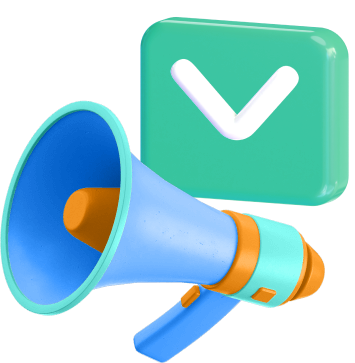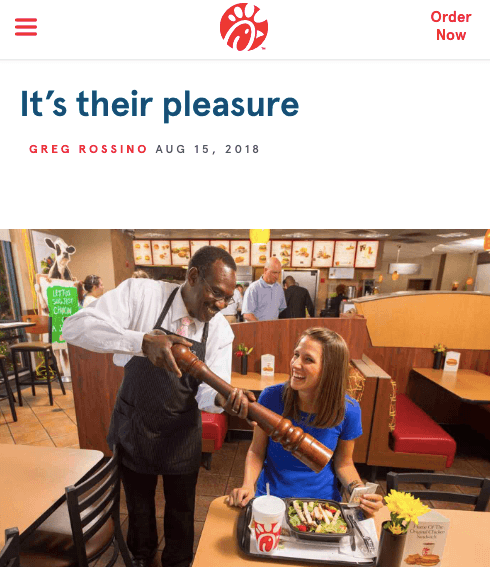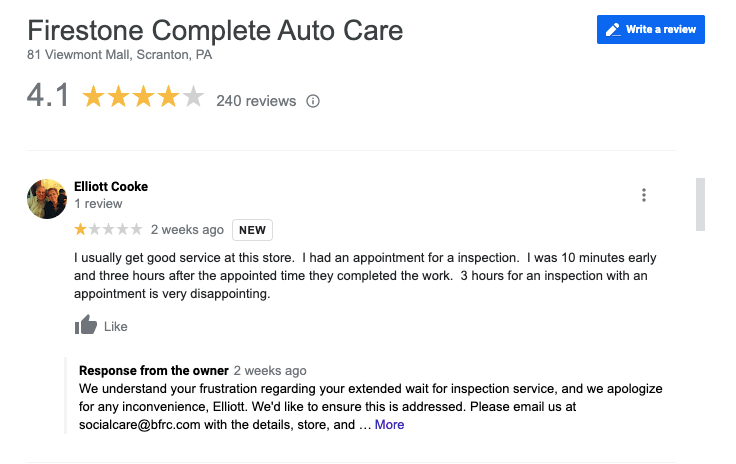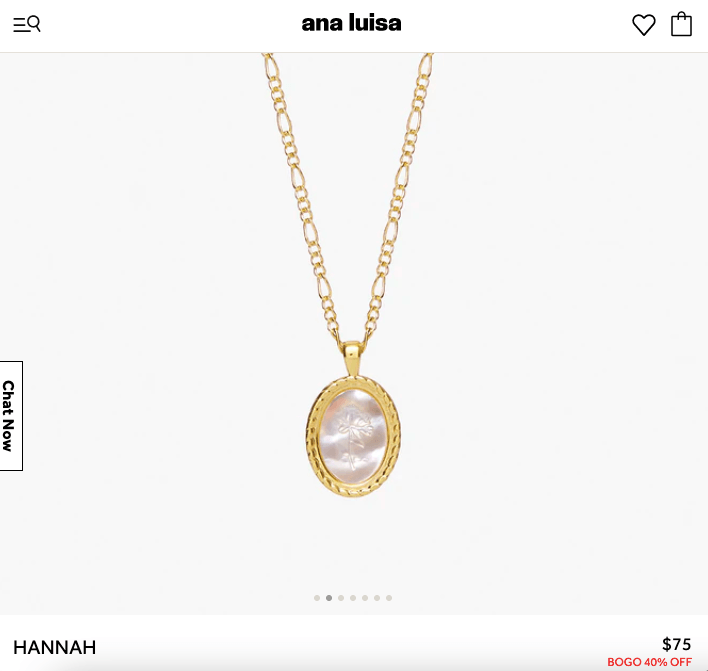-
 Published: May 16, 2022
Published: May 16, 2022
-
 9 min. read
9 min. read
-
 Kayla Johansen
Kayla Johansen Content Writer
Content Writer
- Kayla is a content specialist with a B.S. in marketing. She is certified in Google Analytics and Google Ads Search and Display. When not writing, she enjoys reading, playing with her dog, and baking.
Before social media, websites, or even television, word-of-mouth marketing worked wonders to introduce products to new audiences. But should marketers still consider word-of-mouth a critical marketing strategy? If so, how do you leverage word-of-mouth to grow your business?
Keep reading to learn what word-of-mouth marketing is, why you should use it in 2024, and ideas you can use to generate word-of-mouth.
And while you’re here, do you want to stay up-to-date with the latest marketing news? Sign up for our Marketing Manager Insider emails for the most current insights delivered straight to your inbox!
Don’t miss our Marketing Manager Insider emails!
Join 200,000 smart marketers and get the month’s hottest marketing news and insights delivered straight to your inbox!
Enter your email below:
Inline Subscription Form – CTA 72
“*” indicates required fields
(Don’t worry, we’ll never share your information!)

What is word-of-mouth marketing?
Word-of-mouth marketing is a strategic approach to get people talking about your company. You might generate traditional word-of-mouth — like recommending a book in conversation with a friend — or digital word-of-mouth — such as social media buzz or influencer marketing.
If consumers talk positively about your company, that’s word-of-mouth.
Word-of-mouth marketing involves implementing strategies and tactics to give those conversations a head start.
Benefits of word-of-mouth marketing
Why should you invest the time and money into developing a word-of-mouth marketing strategy? In short, this approach offers the most straightforward way to expand your reach, drive more purchases, and improve customer loyalty.
When you leverage this strategy, you take advantage of these five benefits of word-of-mouth marketing:
1. Respond to innate consumer behavior
Word-of-mouth marketing gets to the heart of consumer behavior and leverages how people naturally think about products and services. When someone likes a brand, they want to talk about it with their friends.
Take a brand’s social media followers, for example. Over 75% of users who follow brands on social media talk about those brands with friends and family.
2. Build brand trust
With the many options available to them, consumers have the freedom to choose their products selectively. Set your brand apart by establishing trust with your audience through word-of-mouth marketing.
Why does word-of-mouth marketing work so well for building brand trust? When faced with a recommendation or a company’s messaging, 92% of consumers will trust the recommendation more.
3. Improve customer loyalty
Earning new customers costs companies 10 times more than retaining existing customers. To improve your bottom line, your company needs to have high customer loyalty.
The strategies you use to build word-of-mouth marketing will indirectly improve your customer loyalty.
How? Generating word-of-mouth depends upon delighting your customers so much that they want to tell others about your company. The more you delight your customers, the more likely they will stick around.
4. Increase your reach
Alongside customer loyalty, you also need to generate new leads to grow consistently. Those loyal fans you created by exceeding your customers’ expectations? They’ll help you access new customers.
Think about it: Every brand fan who shares your company online has followers, some of whom might not have heard of you.
With word-of-mouth coming from your brand fans, you reach exponentially more people than before.
5. Improve your other marketing strategies
As you’ve probably picked up on, investing in word-of-mouth marketing requires focusing on your other marketing strategies. Everything from your promotional and advertising strategies to your product and customer service helps you exceed customer expectations and generate word-of-mouth.
So, when you prioritize word-of-mouth marketing, your other marketing strategies will likely get a boost, too.
8 ways to build your word-of-mouth marketing strategy
Now that you know the benefits of word-of-mouth marketing, how can you create an effective word-of-mouth marketing strategy? Check out these eight tactics you can use, along with real-world word-of-mouth marketing examples to use for inspiration:
- Find what makes you unique
- Improve your existing touchpoints
- Leverage reviews
- Build excitement and mystery
- Give your customers an experience
- Create a notable brand voice
- Craft a relatable brand character or series
- Partner with influencers
1. Find what makes you unique
What are your unique selling propositions (USPs)? Get as specific as possible. If you provide excellent customer service, how do you do so in a unique way? Your answer will form the baseline for your word-of-mouth marketing strategy.
The more new and noteworthy a brand’s offering or communication is, the more likely people will want to talk about it. Creativity breeds memorability.
Example: Chick-fil-A

One of the most recognizable word-of-mouth marketing examples is Chick-fil-A’s “my pleasure.” Though simple, this tactic gets people talking because of its distinctness. The phrase has become so ubiquitous that many people automatically associate the terminology with the fast food restaurant!
2. Improve your existing touchpoints
Take stock of every interaction customers might have with your brand. Your touchpoints might include:
- Product
- Customer service and employees
- Website
- Store
- Social media
- Advertisements
- Email lists
- Packaging
- And more
Look for ways you can improve upon one or more of these touchpoints.
Remember, you want to delight your customers. To do so, you’ll need to understand your audience’s needs and what they value. Conduct market research into your target segments, then use what you find to surpass their expectations.
Example: Amazon
Do you remember how much Amazon’s drone delivery service got people talking? Amazon took a standard touchpoint — shipping and delivery — and innovated upon it.
You don’t have to invest quite that much, but use this example as inspiration for innovating upon your touchpoints. Perhaps you could make your website more interactive or gamify your marketing experience?
3. Leverage reviews
Once you’ve created a delightful experience, use strategies for getting more reviews. Reviews are among the most potent forms of word-of-mouth, with 93% of buyers reading online reviews first.
If you get negative reviews, use them as an opportunity to showcase your customer service. Responding promptly will help anyone who may see that review think more positively about your brand because of your dedication to answering customers’ problems.
Example: Firestone Complete Auto Care

Firestone Complete Auto Care responded promptly to this negative review on their Google Business Profile. In doing so, they let future readers know how much they care about their customers’ experience.
4. Build excitement and mystery
Want two tactics sure to get people talking? Excitement and mystery.
When your customers anticipate something exciting, they’ll want to talk about it. The same goes when they’re trying to guess what a new reveal might be. Your customers will like to discuss their guesses with their friends and family and challenge them to make their guesses.
Example: Starbucks

Starbucks leverages both excitement and mystery well with their seasonal cups. This tactic is another simple approach that leaves loyal Starbucks fans talking about the cup designs every year.
5. Give your customers an experience
Why do excitement and mystery generate buzz? Because they build experiences.
Use experiential marketing to cement your brand in your customers’ minds. When their interaction with your company goes beyond a simple purchase to become a delightful experience, they form a connection. People will more likely share your product or service if they connect with it.
Example: Buc-ee’s

Buc-ee’s might be a gas station, but the company turns a simple road trip stop into an experience. From their sea of pumps and enormous store to their immaculate restrooms and branded merchandise, people have a lot to talk about with this gas station.
6. Create a notable brand voice
Anywhere your customers interact with you, they interact with your brand voice. Why not make that voice stand out and give your customers something fun to share?
Example: MoonPie

MoonPie’s Twitter account leverages a humorous, irreverent tone that people on the platform love to share. While this tone won’t work for everyone, find what aligns with your branding and target audience. Remember: creativity drives word-of-mouth.
7. Craft a relatable brand character or series
When I consider which brands I talk about most often with my family and friends, I find that many of them have consistent characters whom I find relatable and funny.
Brands can sometimes feel impersonal, but giving your audience a character-spokesperson allows them to connect. And when they connect, they’re more likely to care enough about your brand to discuss it in casual conversation.
Example: State Farm

State Farm leverages the character, Jake from State Farm, across commercial series. The character is funny, and he drives memorable story-based advertisements. Jake from State Farm has grown so popular that the company even created a Twitter page for Jake!
8. Partner with influencers
Influencer marketing leverages recommendations directly. With well-chosen influencers, you receive authentic endorsements from someone with an extensive reach whose audience trusts them.
The result? A return on investment (ROI) of $6.50 for every dollar spent on influencer marketing.
Example: Ana Luisa

Ana Luisa partners with several YouTubers to showcase their sustainable jewelry. The brand has even allowed influencers to design pieces, driving more traffic from loyal viewers who may feel more connected to the influencer by purchasing their design.
For example, the “Hannah” necklace was designed by a YouTuber and named after her.
Improve your word-of-mouth marketing strategy by becoming a digital marketing expert
Today, many of your word-of-mouth marketing strategies rely on digital platforms. From your website and email list to your social media and pay-per-click (PPC) ads, you need strong digital marketing skills to build an effective word-of-mouth marketing strategy.
Fortunately, we’ve compiled a library of digital marketing guides you can download for free to learn about social media marketing, business-to-business (B2B) marketing, web design, and more. Leverage these tips to skyrocket the word-of-mouth your business receives online!
-
 Kayla is a content specialist with a B.S. in marketing. She is certified in Google Analytics and Google Ads Search and Display. When not writing, she enjoys reading, playing with her dog, and baking.
Kayla is a content specialist with a B.S. in marketing. She is certified in Google Analytics and Google Ads Search and Display. When not writing, she enjoys reading, playing with her dog, and baking. -

WebFX is a full-service marketing agency with 1,100+ client reviews and a 4.9-star rating on Clutch! Find out how our expert team and revenue-accelerating tech can drive results for you! Learn more
Try our free Marketing Calculator
Craft a tailored online marketing strategy! Utilize our free Internet marketing calculator for a custom plan based on your location, reach, timeframe, and budget.
Plan Your Marketing Budget
Table of Contents
- What is Word-of-mouth Marketing?
- Benefits of Word-of-mouth Marketing
- 1. Respond to Innate Consumer Behavior
- 2. Build Brand Trust
- 3. Improve Customer Loyalty
- 4. Increase Your Reach
- 5. Improve Your Other Marketing Strategies
- 8 Ways to Build Your Word-of-mouth Marketing Strategy
- 1. Find What Makes You Unique
- 2. Improve Your Existing Touchpoints
- 3. Leverage Reviews
- 4. Build Excitement and Mystery
- 5. Give Your Customers an Experience
- 6. Create a Notable Brand Voice
- 7. Craft a Relatable Brand Character or Series
- 8. Partner with Influencers
- Improve Your Word-of-mouth Marketing Strategy by Becoming a Digital Marketing Expert

Maximize Your Marketing ROI
Claim your free eBook packed with proven strategies to boost your marketing efforts.
Get the GuideTry our free Marketing Calculator
Craft a tailored online marketing strategy! Utilize our free Internet marketing calculator for a custom plan based on your location, reach, timeframe, and budget.
Plan Your Marketing Budget





